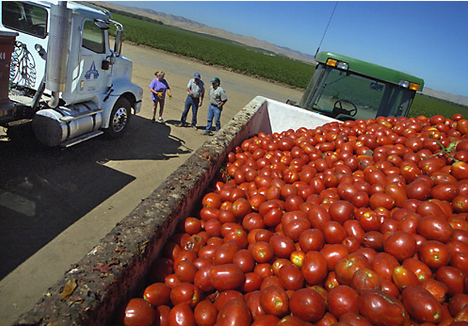In the near future, scientists will engineer food that grows faster and does not spoil.
This is the promise of CRISPR/Cas 9, a game-changing gene-editing tool.
Bioengineered food could end world hunger. And, at least in theory, it would be perfectly safe.
It’s all possible in the New Gilded Age.
Advances in compute power and data analytics led to the full reading of the human genome in 2003. Ever since, scientists have been building on the seminal event.
In the 1980s, scientists discovered how some bacteria used gene-editing to defend against viral DNA. The bacteria used special enzymes to cut, copy and store bits of viral DNA for future reference.
Twenty years later, researchers determined the DNA of any organism could be snipped. By 2012, biologists Jennifer Doudna and Emmanuelle Charpentier demonstrated how CRISPR could precisely edit an organism’s genome.
It changed everything.
With CRISPR, scientists can literally edit organisms, removing the bits that lead to unfavorable outcomes.
Ethicists worry about a rush toward designer babies. And there have been some disturbing developments on that end in China. However, the real opportunity in the near term has always been agriculture.

Organisms are constantly undergoing this process naturally. They evolve. It just takes time. Gene editing speeds the process, shaving off years, decades and even millennia.
This is very different from GMOs, or genetically modified organisms. GMOs introduce foreign organisms to improve outcomes. Think of the end product as a Frankenstein.
For example, in 1994 Calgene won approval to sell the Flavr Savr tomato. Too make a Flavr Savr, scientists genetically modified a garden variety tomato with aminoglycoside 3-phosphotransferase II, a compound that kept the fruit from rotting.
The tinkering sabotaged the process that makes tomatoes turn squishy. But the less-squishy tomatoes never did catch on with a skeptical public. The company was later sold to Monsanto.
Speaking recently to Wired, Jennifer Doudna noted CRISPR has the potential to speed up new crop development by several orders of magnitude.
In May, scientists at Cold Harbor Laboratory in New York published a report showing how gene editing might finally solve the pesky tomato problem.
Wild tomato plants drop their fruit. When the fruit hits the ground, it gets bruised or worse. So farmers harvest tomatoes early to prevent damage.
Then, to facilitate mechanical pickers, breeders played with the tomato plant’s root structure. They wanted the fruit to hang on the branches longer. But nature got in the way. The new plants produced so many branches that harvesting became harder and yields actually declined.
The Cold Harbor researchers found the gene responsible for weird branches and edited it away. They created a new tomato plant without extra branches that does not drop the fruit.
In 2015, Penn State researchers used CRISPR to remove the gene that caused white button mushrooms to discolor over time. Digital Trends reports the group asked government regulators if the mushrooms fell under their purview. They did not. The mushrooms could legally go to market.
It’s not surprising that Monsanto and Dupont, two of the industry heavyweights, have been enthusiastic early supporters of gene editing. It’s cheaper, faster and does not suffer the stigma of transgenic modification. It’s also safer.
Products are coming to market, soon.
Gene editing is a game-changing, emerging technology. It would have been impossible two decades ago. Now it is on the horizon. It will create many new business models. It will create new companies and sectors.
And don’t assume the spoils will be limited to agricultural giants. This will impact equipment makers, land owners and software developers. The implications are many.
Check back in coming weeks for ways to play this theme in the stock market. But a good way to start from the ag perspective is with major crops giants like Monsanto (MON) and Syngenta (SYT).
Best wishes,
Jon Markman

